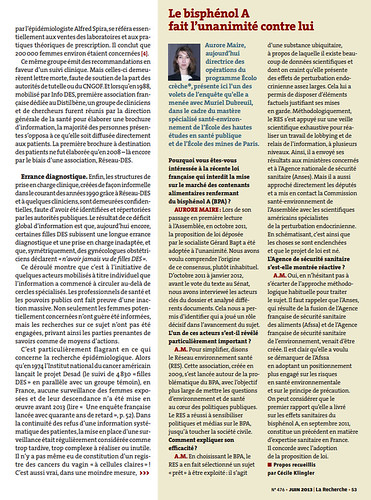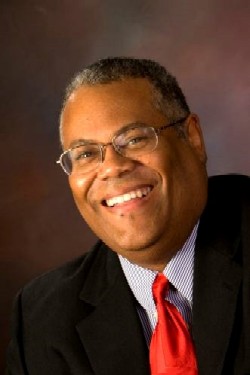Why I Stopped Publishing Posts On LinkedIn And What It Has To Do With Leadership
Posted by Mitch Mitchell on Mar 29, 2016
As an independent consultant, I usually have two "speeds" I get to work with as it pertains to doing business in general; slow and fast. Moving slow means I'm working on a contract or with a client, which usually means I don't get to market because I'm not always sure how long a project might be. Moving fast means I'm marketing, marketing in multiple ways, and trying to gain both an audience for my long term goals and a new client for present goals.
 |
When I came home in November 2014 after 18 months in Memphis, I took a few weeks off to relax, then started up slowly in my marketing efforts since December is a month where almost no one ever wants to think about new business or even someone who might be able to help their business be better. So, even though this was the "fast" period, I was pretty much on cruise control rather than pedal to the metal, taking things as they went along.
Out of the blue a friend of mine told me about the ability to post articles on LinkedIn. She said she'd been doing it for a few weeks and that she was getting great visibility and how it might work well for me because of how much I write.
I figured why not, but I first wanted to look to see what it was all about. It looked pretty cool so I wrote an original article and posted it there, along with an image to see what would happen.
That first article, which went live on January 5th, 2015 and was titled Hospitals Must Change From "Cut Staff" Mentality To Maximizing Revenue, ended up getting over 300 views and had 55 likes. My eyes lit up seeing that kind of performance, and the game was on.
I was in fast mode, and I was feeling pretty good. I was sharing those articles on all other social media spaces, and sometimes I was linking to them in my blogs. It looked like I was finally showing a lot of traction across the board, which was pretty cool because LinkedIn had always been a tough nut to crack. I started posting in more groups as well, offering my opinion and tips on things and every once in a while sharing there also. It all seemed to be appreciated; I'd be lying if I didn't say it was pretty heady stuff.
Over the course of the next few months I posted a good amount of articles, some very successful and some a bit less, but all had more than 100 views. I started having a lot of people following me because of those articles, and at some point along the way I went over 1,000 people and felt thrilled to get there. On March 31st I had my most seen article ever, where almost 1,300 people saw an article titled Five Ways To Push Forward When You're Stuck. It had 82 likes also; I thought it could go on forever because I always had something to say.
After that, things started dwindling a bit. I still had some articles that got some good viewing numbers, but likes started dropping and soon the numbers of people viewing were dwindling. By May I was starting to have fewer than 60 people seeing most of the articles, and by July it had gotten to fewer than 35 people seeing them. After May 26th I only had one other article reach 100 views.
As I got close to hitting my 100th article, I decided that if my last few articles didn't have even 40 people view them that it was time to stop and move on. My last 3 article got 27, 23 and 28 views; I decided not to even try to add the 101st article as an experiment to see if LinkedIn might start showing my articles to more people, so the last one I put up was on December 21st.
 |
I had no idea what had happened to reduce the visibility of my posts. I wondered whether it was me putting up too many articles, whether LinkedIn didn't think my articles were still relevant, or whether people had decided that I had nothing new to offer and stopped wanting to view them anymore. It's something that long time bloggers often have happen to them, where there are people who visit and comment all the time, then suddenly you don't see them anymore, you suffer a lull, and another group comes in and it starts over again.
Of course, LinkedIn was making some changes as well. They changed how groups worked and suddenly conversations dropped and all the groups I was participating in were taken over by marketers. They also made all the groups private, which means people who weren't in those groups would no longer see anything that came from there. I have no real idea how that is working for them now because the last time I tried posting something to a group to see if I could generate a conversation I got what my wife called "crickets in 3-part harmony".
At this point I'm sure this article looks like a bashing of LinkedIn but it's not. As strange as it might seem, it's actually an allegory that ties in with how the process of leadership goes, sometimes good, sometimes bad.
For instance, as leaders we try to find ways to make the process for those who report to us work better and make them better at the same time. Every once in a while we come across a formula that not only works but works great. Everyone's happy, we're sharing chocolate cake every day and life is sweet.
We might notice at some point that things are wavering some, so we as the leader has a choice to make. We either tweak the process a little bit or we decide to continue on the path we've chosen, thinking that things will improve and get back to where we were, without a clue as to what the metrics are telling us. In essence, we're guessing; guessing rarely succeeds for long.
Now we notice that performance is falling, and we start taking a look at both the process and the people. Hopefully we don't find anything wrong with the team; if it were that easy life would be sweet. Instead, it's usually the process, whether the initial results were a freak or some outside stimulus has insinuated its way into things and made it difficult for us to have the same success we had before.
 via Compfight |
Now we're in "fish or cut bait" mode, and the only one who can make this decision is the person in charge. A determination needs to be made whether to continue on the path or get off and try something else. It's never an easy decision because life is too complicated for simplicity most of the time.
Deciding to go forward and just tinker with the process is probably the easiest and worst decision most of the time. We've seen massive failures on corporate America because companies adopted that strategy while other companies were innovating. Even if it's easier it doesn't mean it doesn't take a lot of work; however, most of the time extra work isn't what happens, and problems just don't go away on their own.
Deciding to drop a process is scary and sometimes dangerous. It's also hard because it forces leadership to come up with something new and give it another try, with no guarantee that it's going to work. However, it supports the reality that change is always inevitable, even if some of the change might involve some of the old techniques need to be revisited. Every once in a while what's new is actually old, but if it's not it's still a great place to lay a foundation whenever you're looking to find ways to improve.
For me, making a decision to stop putting new articles on LinkedIn was a leadership decision; after all, officially and by law I'm the president & CEO of my corporation. Allocating time to a losing strategy that I had no control over didn't make sense. It was time to think of a new strategy; time to drop the old one.
Whether your company or department is large or small, if you're in a leadership position you need to learn how to evaluate, initiate, track and modify and, if need be, stop a process, figure something new out and start again. If you know why something isn't working and you can determine it's an aberration that's one thing. If you can't, that's another.
Never be afraid to change if your intention is to try to make things better. For that matter, when things are working well, always be looking for ways to keep growing instead of waiting for the fall. Waiting always brings on the fall, and you might not be able to recover all the time.
Thanks for going along LinkedIn; as always, you've provided a nice lesson to learn from... whether you intended to or not.


Mitch, thanks for sharing your experience and then tying it to leadership. I may post to LI groups but have not yet published via Pulse. After all, doesn’t it mean you are just building up their platform for free? Thanks for your articles. I like to read them right here.
Thanks Skip. I was posting a few things to groups but I wasn’t happy with what I was seeing, and I found there were a few groups that didn’t like people posting their own stuff there… which made no sense to me. You’re right about the other side of it; why keep giving LinkedIn free material like that, especially if they don’t want to share it with anyone.
You had really a nice experience on the LinkedIn. Thanks for sharing your thoughts. By the way you are right why to give free materials to LinkedIn if they don’t want to share your contents. Than it is good to keep your unique contents and ideas with your website or blog visitors.
Uttam, it did start getting on my nerves when the articles started getting fewer shares. We all have to be ready to make the types of decisions needed to break away when things aren’t working the way we want them to.